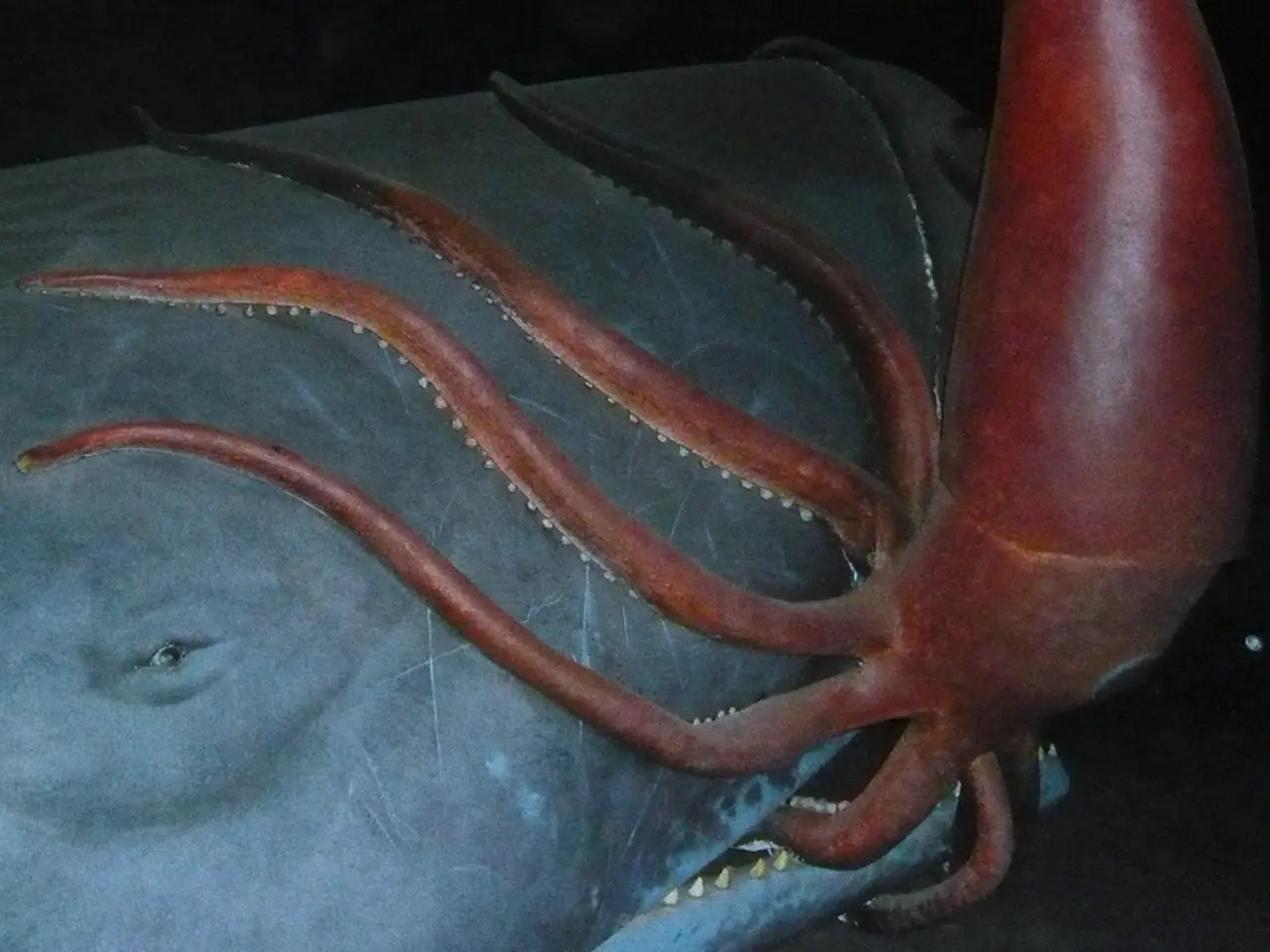During the calibration of marine research tools, the Australian Marine National Facility recorded a squid engaged in a violent confrontation with another.
In the vast expanse of the Southern Ocean, approximately 70 species of squid roam, including the notorious Humboldt squid (Dosidicus gigas). This species, known for its aggressive behavior and opportunistic cannibalism, is a prime example of the squid's predatory nature.
Recently, an intriguing encounter involving two squids off the southwest coast of Tasmania has sparked scientific interest. The research was conducted by the Commonwealth Scientific and Industrial Research Organization (CSIRO), a science agency of the Australian government. Although the exact species of the squids in the video have yet to be identified, their aggressive behavior aligns with that of pelagic squids common to the region.
The video footage shows one squid dragging another away, suggesting aggressive behavior. This encounter could potentially involve cannibalism, but it's also plausible that two different species were engaged in simple predation. Michael Vecchione, a researcher at the Smithsonian's NMFS National Systematics Laboratory, has suggested that it's possible two species were involved in the encounter.
Illex and Todarodes species, known pelagic squids exhibiting schooling behavior, are among the candidates for the species in the video. These squids are also known for cannibalism and aggression, particularly during breeding or feeding periods. Other local oceanic squid species within Australian waters that display similar behaviors are also potential candidates.
Danna Staaf, a researcher with a PhD from Stanford's Gilly Lab, has focused her studies on the Humboldt squid, a species that shares characteristics with the squids in the video. Her research has shown that some squid species exhibit a high amount of cannibalism, with Gonatus onyx displaying an exceptionally high rate, with 42% of its prey coming from cannibalism.
The encounter was captured using an advanced acoustic-optical tool, designed to gather information on sea creatures living at a depth of 3,200 feet below sea level. Rudy Kloser, the leading scientist on the project, stated that the system attracts inquisitive and sometimes aggressive squids when calibrating it.
As the investigation continues, the exact species of the squids in the video remain unidentified. However, the encounter serves as a reminder of the fascinating and complex behaviors exhibited by these deep-sea creatures. The study of these behaviors not only sheds light on the squids' predatory nature but also contributes to our understanding of the intricate ecosystems that exist in the depths of our oceans.
The article was contributed to by Jed Winer, furthering our knowledge and appreciation of the world's most mysterious creatures.
- The intriguing encounter off the southwest coast of Tasmania, involving potential cannibalism among squids, is currently under investigation by the Commonwealth Scientific and Industrial Research Organization (CSIRO).
- Pelagic squid species such as Illex and Todarodes, known for their schooling behavior, aggressive acts, and cannibalism, are potential candidates for the squids in the video.
- The study of squid behaviors, including their predatory nature and cannibalism, contributes to our understanding of oceanic ecosystems and enhances our appreciation for the world's mysterious deep-sea creatures, as demonstrated by the ongoing investigation of the Tasmanian squid encounter.




